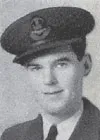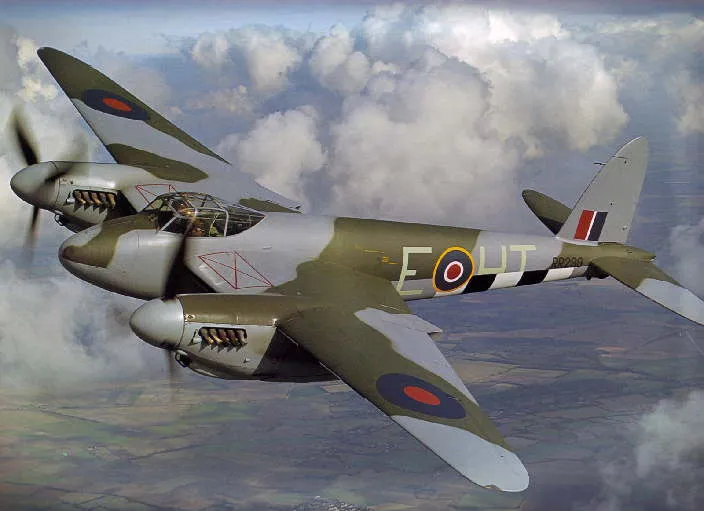Flight Lieutenant Trites had previously been employed by the Royal Bank of Canada, first at the Sackville, New Brunswick branch from June 19, 1936, later moving to the Montreal, Beaver Hall branch from where he enlisted in the RCAF January 2, 1941
/p> Cenotaph at Sackville Rural Cemetery Sackville, Westmorland County, New Brunswick, CanadaTrites, Richard Murray (Flight Lieutenant)
Killed in Action 1945-January-18


Birth Date: 1919-March-15
Born:
Parents: Son of Raleigh Trites and Isobel Isla (nee Fawcett) Trites, of Sackville, New Brunswick, Canada.
Spouse:
Home: Sackville, New Brunswick
Enlistment: Montreal, Quebec
Enlistment Date: 1941-January-02
Service
RCAF
Unit
464 (FB) Sqn- Squadron (RAAF)
Aequo Animo Equanimity
Base
RAF Thorney Island
Rank
Flight Lieutenant
Position
Pilot
Service Numbers
J/7919
Prev: R/79017
Mission
Mosquito FB.Mk VI MM403
Bombing 1945-January-18 to 1945-January-18
464 (FB) Sqn (RAAF) RAF Thorney Island, Hampshire, England
464 Squadron RAAF (Aequo animo) RAF Thorney Island, Hampshire. Mosquito FVI MM 403 SB-V was part of a force of 14 aircraft in an INTRUDER operation over the Ardennes salient. The aircraft suffered an engine failure and unable to maintain altitude, was abandoned at low altitude with the loss of one aircrew member
The Mosquito crashed 10 miles north east of Merville, France
The pilot, Flight Lieutenant R M Trites (RCAF) was killed in action
Navigator Flight Lieutenant D M Shanks (RAAF) baled out at 600 feet and survived to return to his unit 1945-01-20
![]() Royal Air Force Serial and Image Database
Royal Air Force Serial and Image Database
![]() Search for France - Crashes 39-45
Search for France - Crashes 39-45
![]() ROYAL AIR FORCE: 2ND TACTICAL AIR FORCE 1943-1945 I Imperial...
ROYAL AIR FORCE: 2ND TACTICAL AIR FORCE 1943-1945 I Imperial...
Mosquito serial: MM403

The de Havilland DH.98 Mosquito was a British twin-engine shoulder-winged multi-role combat aircraft, introduced during the Second World War. It was one of few operational front-line aircraft of the era whose frame was constructed almost entirely of wood. Nicknamed The Wooden Wonder, it was affectionately as the "Mossie" to its crews. The total number of DH98 Mosquito aircraft built was 7,781, the type serving with the main Allied air forces, including both the United States and Russia.
When Mosquito production began in 1941 it was the fastest propeller driven operational aircraft in the world. The first variant was an unarmed, high-speed, high-altitude photo-reconnaissance aircraft. Originally conceived as an unarmed fast bomber, the Mosquito's use evolved during the war into many roles including low to medium-altitude daytime tactical bomber, high-altitude night bomber, pathfinder, day or night fighter, fighter-bomber, intruder, and maritime strike aircraft. It was also used by the British Overseas Airways Corporation (BOAC) as a fast transport to carry small high-value cargoes to, and from, neutral countries, through enemy-controlled airspace. The crew of two, pilot and navigator, sat side by side, but a single passenger could ride in the aircraft's bomb bay when necessary.
The Mosquito FB Mk. VI was often flown in special raids, such as Operation Jericho, an attack on Amiens Prison in early 1944, and precision attacks against military intelligence, security and police facilities (such as Gestapo headquarters). On the 10th anniversary of the Nazi' seizure of power in 1943, a morning Mosquito attack knocked out the main Berlin broadcasting station while Hermann Goering was speaking, putting his speech off the air. Goering later said: "It makes me furious when I see the Mosquito. I turn green and yellow with envy. There is nothing the British do not have. They have the geniuses and we have the nincompoops."
The Mosquito flew with the RCAF and other air forces in the European, Mediterranean and Italian theatres. After the end of the Second World War Spartan Air Services flew 10 ex-RAF Mosquitoes, mostly B.35's plus one of only six PR.35's built, for high-altitude photographic survey work in Canada. There are approximately 30 non-flying Mosquitos around the world with five airworthy examples, four in the United States, and one in Canada. Harold Skaarup web page and Wikipedia
![]() BAE Systems (formerly De Havilland)
BAE Systems (formerly De Havilland)

